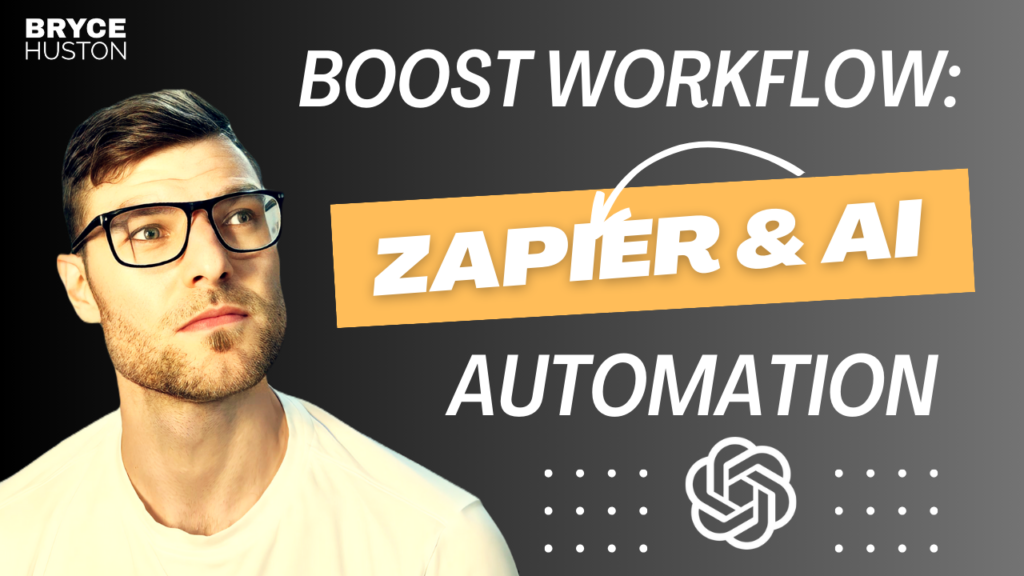Introduction
In the fast-paced modern world, businesses are constantly seeking ways to optimize their workflow, increase productivity, and streamline processes. The rise of automation, coupled with the power of AI, has revolutionized how organizations operate. One of the key players in this realm is Zapier, a powerful integration tool that enables seamless automation across different software applications. In this article, we will explore the benefits and potential of Zapier and AI automation in boosting workflow efficiency.
1. Understanding Workflow Optimization
Before diving into the specifics of Zapier and AI automation, it is crucial to understand the concept of workflow optimization. Essentially, workflow optimization is the process of maximizing operational efficiency by analyzing, streamlining, and automating various tasks and processes within an organization. By doing so, businesses can save time, reduce errors, and focus on high-value activities, ultimately boosting overall productivity.

2. Introduction to Zapier
Zapier, often referred to as the “glue” that connects different applications, is a web-based automation tool that allows users to integrate their favorite apps and create automated workflows. With over 3,000 app integrations available, Zapier provides a comprehensive platform for automating repetitive tasks and data transfers between systems.
2.1 How Zapier Works
Zapier operates on a simple principle of triggers and actions. Users can create “Zaps” which link a trigger event in one app to produce an action in another. For example, when a new email arrives in Gmail (trigger), Zapier can automatically create a task in a project management tool like Asana (action). This powerful connectivity enables businesses to automate processes and eliminate manual data entry.
2.2 Benefits of Zapier
Time Savings: By automating routine tasks, Zapier frees up valuable time for employees to focus on more meaningful work.
Error Reduction: Manual data entry often leads to errors. Zapier’s automation eliminates human error, minimizing mistakes and increasing accuracy.
Increased Productivity: With repetitive tasks off their plate, employees can focus on high-value activities, leading to improved productivity.
Seamless Integrations: Zapier’s vast library of app integrations allows businesses to connect different software seamlessly, creating a unified ecosystem.

3. Leveraging AI Automation
While Zapier provides a powerful tool for workflow automation, the integration of artificial intelligence takes it to the next level. AI automation adds an extra layer of intelligence, allowing for even more sophisticated and context-aware workflows.
3.1 Machine Learning in Workflow Automation
Machine learning algorithms can be integrated into Zapier workflows to enable intelligent decision-making based on data patterns. For example, an AI-powered Zap can automatically categorize and tag customer support emails based on their content, reducing manual effort and improving response times.
3.2 Natural Language Processing (NLP)
NLP is a subfield of AI that focuses on understanding and processing human language. By leveraging NLP capabilities within workflows, businesses can automate tasks such as sentiment analysis, email parsing, and data extraction from unstructured text. This automation significantly enhances efficiency and accuracy.
3.3 AI Chatbots for Enhanced Customer Support
With AI automation, businesses can deploy chatbots that use natural language processing and machine learning to provide personalized and immediate customer support. AI chatbots can handle common inquiries, gather customer information, and escalate complex issues to human agents when needed. This not only improves response times but also frees up customer support teams to focus on more complex issues.

4. Real-Life Applications of Zapier & AI Automation
4.1 Marketing Automation
Zapier and AI automation can greatly assist in marketing efforts by automating lead generation, social media posting, email marketing campaigns, and more. By integrating various marketing tools, businesses can create seamless workflows that nurture leads, track campaign performance, and optimize marketing efforts.
4.2 Sales Process Optimization
Automation tools like Zapier can assist sales teams by automating lead scoring, data enrichment, CRM updates, and even sending personalized follow-up emails. By reducing manual tasks, sales professionals can focus on building relationships and closing deals, ultimately accelerating the sales process.
4.3 HR and Employee Onboarding
Automating HR workflows using Zapier and AI can streamline employee onboarding, automate time-off requests, and automate employee data management, reducing administrative burdens. This not only saves time but also ensures a smooth and error-free onboarding experience for new employees.

Conclusion
In conclusion, Zapier and AI automation provide businesses with a powerful toolkit to boost workflow efficiency and optimize processes across various departments. The integration of AI adds intelligence and context-awareness, leading to even more sophisticated and tailored automation workflows. By leveraging Zapier and AI automation, businesses can save time, reduce errors, increase productivity, and ultimately focus on what matters most – driving growth and innovation.

